Germany Diabetes Drugs and Devices Market Size
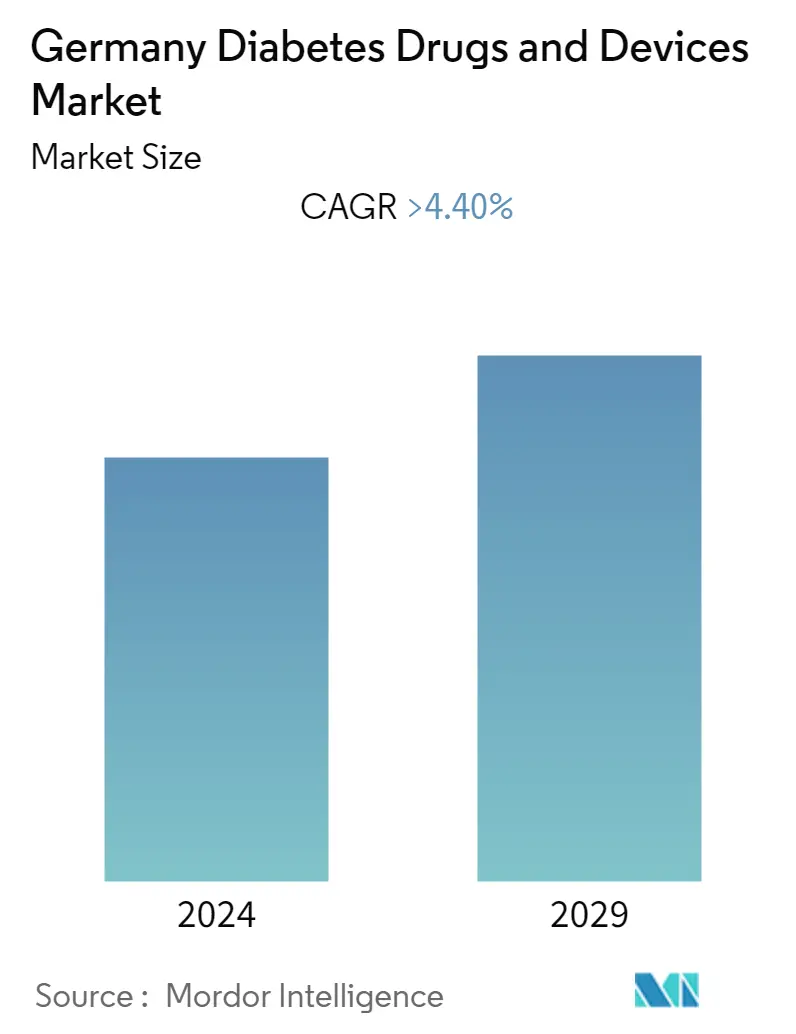
| Study Period | 2018 - 2029 |
| Base Year For Estimation | 2023 |
| Forecast Data Period | 2024 - 2029 |
| Historical Data Period | 2018 - 2022 |
| CAGR | > 4.40 % |
Major Players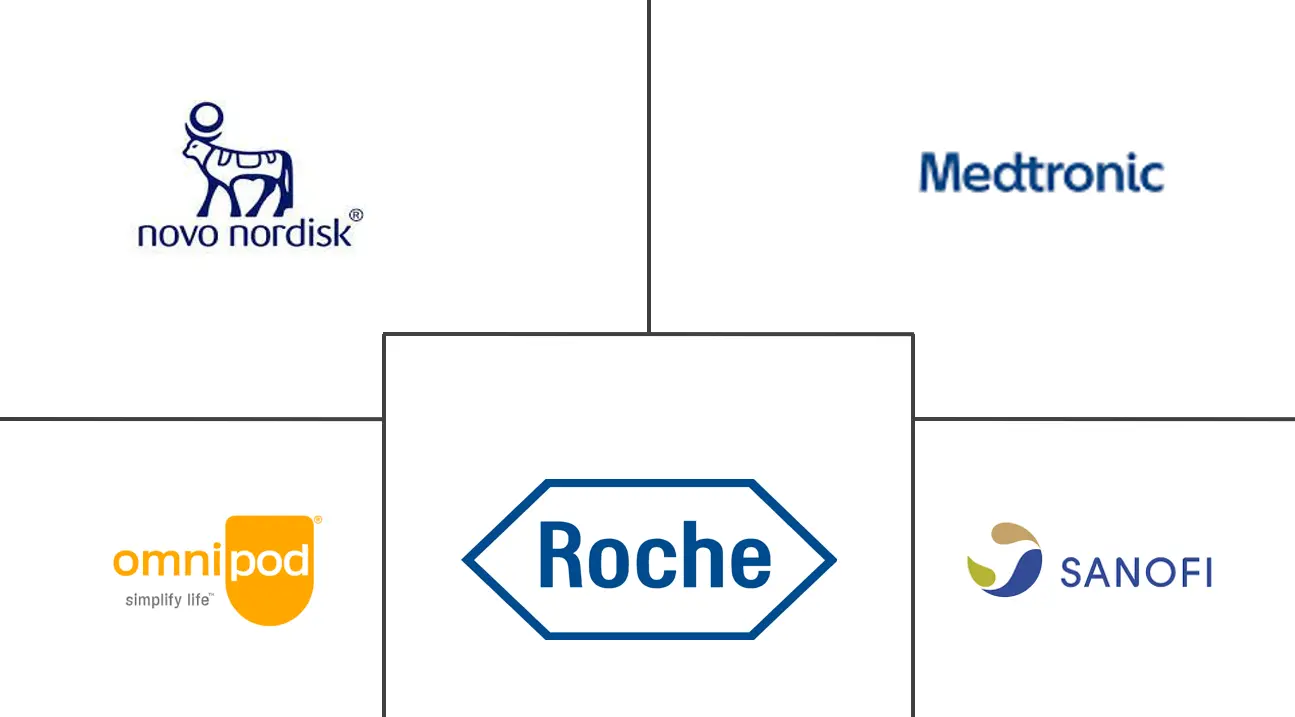
*Disclaimer: Major Players sorted in no particular order |
Need a report that reflects how COVID-19 has impacted this market and its growth?
Germany Diabetes Drugs and Devices Market Analysis
Germany's diabetes drugs and devices market size is estimated at USD 6 billion in the current year. The market is expected to reach USD 7.5 billion in five years, registering a CAGR of more than 4.4% during the forecast period.
The COVID-19 pandemic has significantly impacted the diabetes care device market. The prevalence of diabetes in patients hospitalized with COVID-19 and evidence that improved glycemic control may improve outcomes and shorten hospital stays in patients with SARS-CoV-2 has led to a reduction in diabetes mellitus. The importance of therapeutic equipment is emphasized. The pandemic has also highlighted opportunities to continue and expand innovation in diabetes care through virtual consultations between healthcare providers and people with diabetes and with diabetes technology. Crisis management has led to unprecedented interest in telemedicine from patients and healthcare professionals, removing many long-standing regulatory barriers.
Diabetes drugs and devices are designed to stabilize and control blood sugar levels in people with diabetes. Antidiabetic drugs have become potential candidates for treating diabetic patients affected by SARS-CoV-2 infection during the novel coronavirus disease (COVID-19) pandemic. According to the German Diabetes Center (DDZ), at least 7.2% of the German population currently has diabetes, and the trend is expected to increase significantly over the next 20 years. It has been observed that the rate of new diagnoses of type 1 and type 2 diabetes is increasing, mainly due to obesity, unhealthy diet, and lack of exercise. Rapid increases in the incidence and prevalence of diabetes and health care costs indicate an increase in the use of antidiabetic drugs.
Germany is one of the developed countries, and when it comes to medical care, it is a developed country. Technologies such as continuous blood glucose monitoring and insulin infusion pumps have been adopted in Germany earlier than in other developing countries. Additionally, redemption and pricing policies are highly regulated, which drives the market and increases acceptance of new advanced technologies. Market opportunities for players in the German diabetes care devices market include numerous new product introductions, increased international research collaboration for technological advances, and increased public education on diabetes.
Thus, the above factors are expected to drive market growth over the forecast period.
Germany Diabetes Drugs and Devices Market Trends
The continuous Glucose Monitoring Segment is Expected to Witness the Highest Growth Rate Over the Forecast Period
The continuous blood glucose monitoring segment is projected to grow at a CAGR of around 11% during the forecast period.
According to the European Health System and Policy Watchdog 2021, Germany has the world's oldest social insurance system (GKV). Health insurance is compulsory. People whose income exceeds certain limits or belong to certain occupational groups can opt out of statutory health insurance and enroll in private health insurance (PKV). About 11% of the population has private health insurance, and 89% have statutory health insurance. The insurance covers all legal residents, but only 0.1% of her population does not have health insurance.
The frequency of observing glucose levels depends on the write of diabetes, which varies from patient to patient. Type-1 diabetic patients must verify their blood glucose levels at common intervals, supervise their blood glucose levels, and adjust the insulin dosing. Therefore, if a patient accomplishes 5-6 tests daily, the ordinary money on test strips may be over USD 100 / month. These expenses add to the already elevated costs of diabetes management and add to the industry's development. The common CGM equipment accurately represents blood glucose patterns and tendencies compared to daily tasks to check glucose levels at set periods.
Continual glucose monitoring devices have become a well-liked choice for portable finger-prick glucometers accessible in the industry for the comfort of diabetic patients. Continued glucose observing equipment is becoming less expensive with the advent of new technologies, like cell phone integration, which will probably maneuver the slice development during the forecast period.
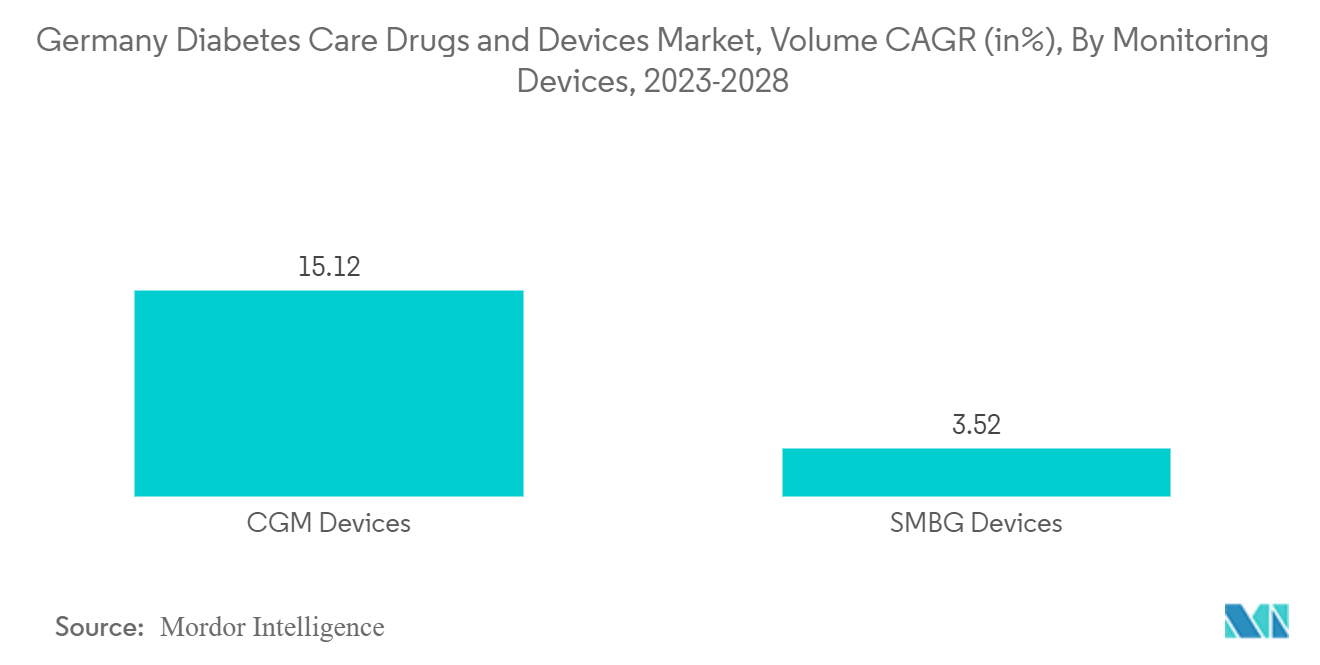
Rising diabetes prevalence
The prevalence of diabetes in Germany has increased alarmingly in recent years. A diabetic need several corrections throughout her day to maintain nominal blood sugar levels, including Oral antidiabetic drugs, or monitor blood sugar and take additional carbohydrates. It has been observed that the rate of new diagnoses of type 1 and type 2 diabetes is increasing, mainly due to obesity, unhealthy diet, and lack of exercise. Rapid increases in the incidence and prevalence of diabetes and healthcare expenditures, indicate increased use of diabetes medications and devices.
Diabetes is a major vitality issue and among the extraordinary obstacles for medical care systems all over Germany. The prevalence of known type 1 & 2 diabetes in the German language adult population is towering beside an elevated number of patients who are not yet diagnosed with the disease. because of an aging population and unwholesome lifestyle, the prevalence of write 2 diabetes is expected to boost steadily over the next few durations. High-quality care, such as proper monitoring, comparison of likelihood factors, and energetic self-management, are critical for hindering complications in German language patients with type 2 diabetes.
Oral antidiabetic agents are available worldwide and are recommended for use when lifestyle management and escalation of type 2 diabetes treatment are required. Oral formulations are usually the drugs of first choice for the treatment of type 2 diabetes because of their wide range of efficacy, safety, and mechanisms of action. Antidiabetic drugs help people with diabetes control their condition and reduce the risk of diabetic complications. People with diabetes may need to take antidiabetic drugs throughout their lives to control blood sugar levels and avoid hypoglycemia or hyperglycemia. Oral antidiabetic drugs have the advantage of being easy to use and low cost. This has made them an attractive alternative to insulin, leading to greater acceptance and improved adherence.
In Germany, strict government guidelines and favorable WHO regulations encourage companies to develop innovative products. Penetration of these products into the German market will support clinical research studies in local organizations, facilitate management and expedite the discovery process. Diabetes can be viewed as a data-managed disease, and examples of real-world health and treatment data collection provide information for integrated and personalized chronic disease management. Both patients and diabetes caregivers share treatment decisions using continuously collected metabolic, therapeutic, and lifestyle data. Diabetes is a major health problem and one of the major challenges for the healthcare system across Germany. The increasing incidence, prevalence, and progression of the disease have prompted the development of new drugs that provide additional treatment options for patients with diabetes. Market opportunities for players in the German diabetes drug market include numerous new product launches, increased international research collaboration for technological advances, and increased public education on diabetes.
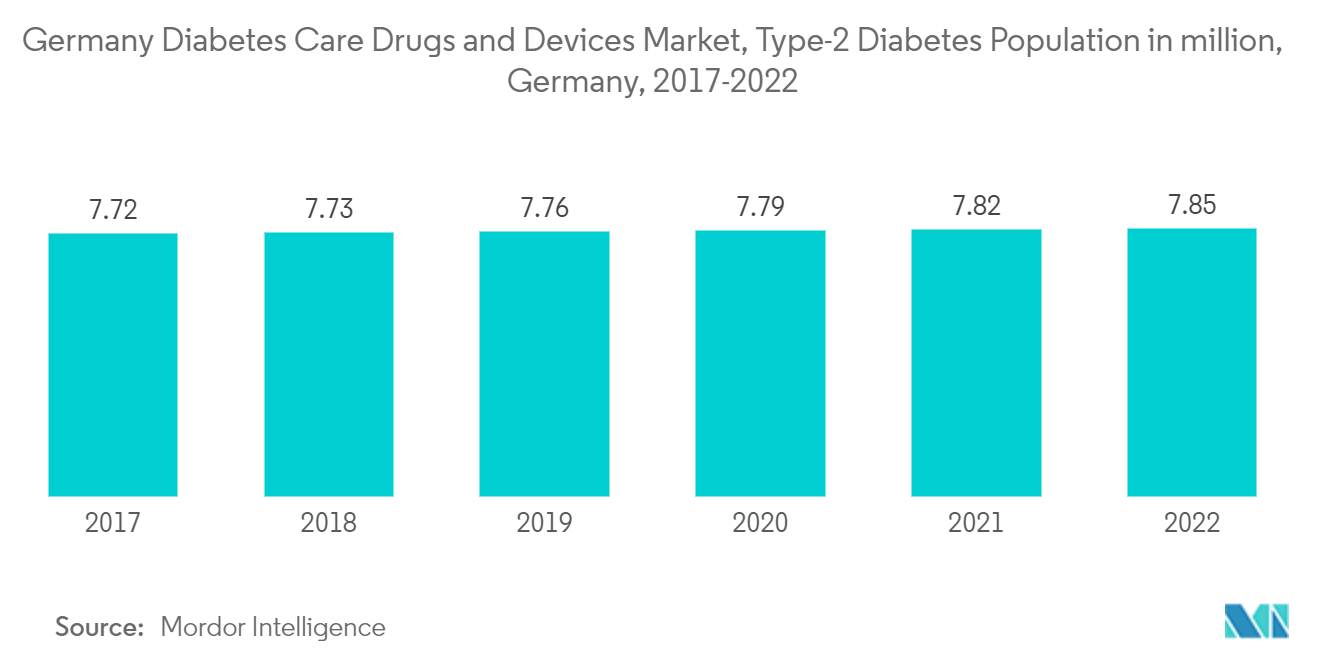
Germany Diabetes Drugs and Devices Industry Overview
Manufacturers have constantly innovated to survive in the market. Large companies such as Abbott and Medtronic have made numerous mergers, acquisitions, and partnerships to gain market dominance while adhering to organic growth strategies. The manufacturers of insulin delivery devices are spending a huge amount on the R&D of the devices. For example, Novo Nordisk partnered with Abbott Diabetes Care, which may also assist to enable insulin statistics to be shared between Novo Nordisk-connected insulin pens and digital fitness equipment well suited to the FreeStyle Libre portfolio of products. Mega Blockbuster Lantus, manufactured with the aid of Sanofi, led the basal insulin field.
Germany Diabetes Drugs and Devices Market Leaders
Medtronics
Roche
NovoNordisk
Sanofi
Omnipod
*Disclaimer: Major Players sorted in no particular order
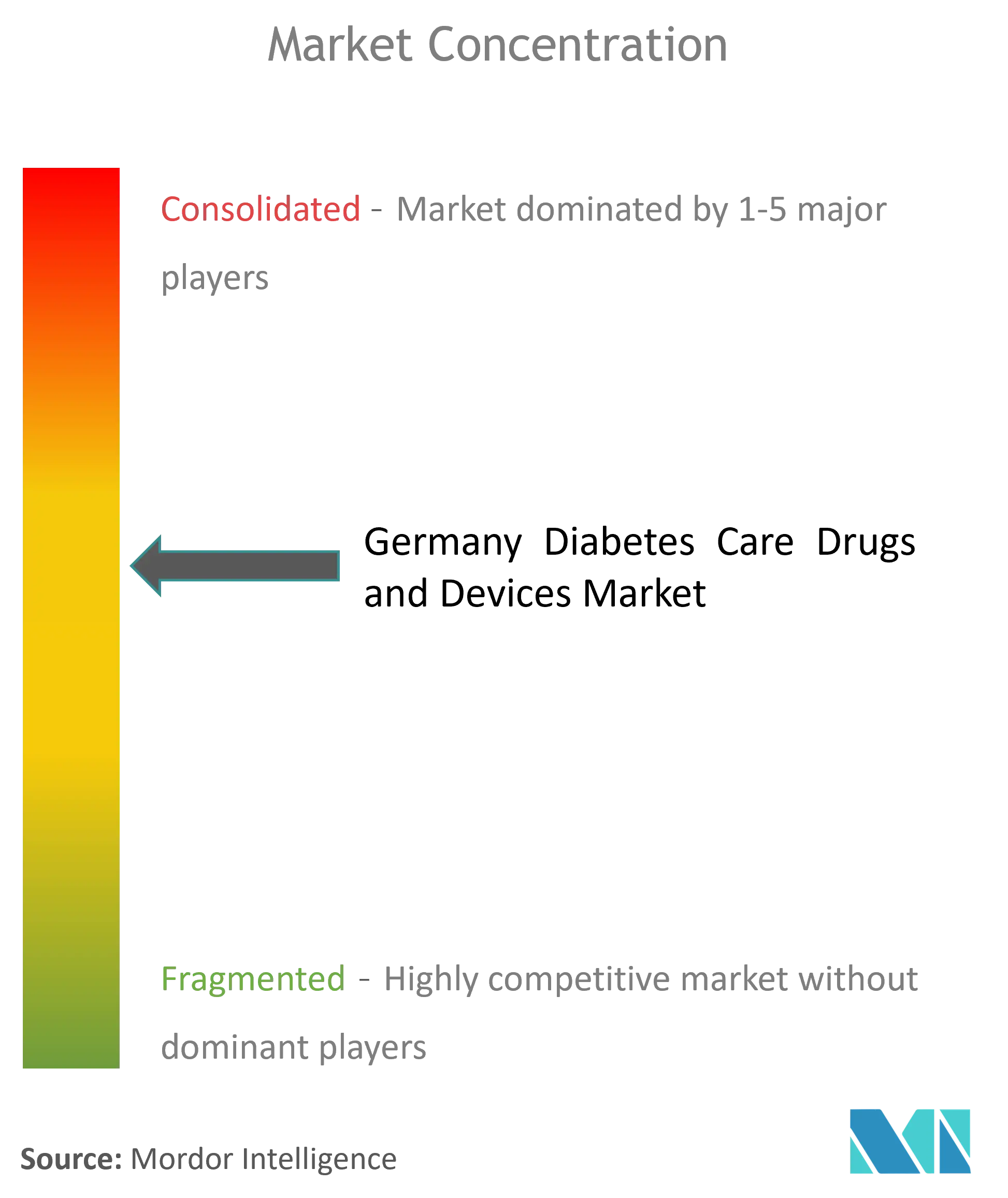
Germany Diabetes Drugs and Devices Market News
- February 2023: AstraZeneca's Forxiga (dapagliflozin) was approved in the European Union to extend the indication for heart failure with reduced ejection fraction to cover patients across the full spectrum of left ventricular ejection fraction. It includes HF with mildly reduced and preserved ejection fraction.
- April 2022: Abbott, CamDiab, and Ypsomed announced they are partnering to develop and commercialize an integrated automated insulin delivery (AID) system. The initial focus of the partnership will be on European countries. The connected, smart wearable solution is designed to continuously monitor a person's glucose levels and automatically adjust and deliver the right amount of insulin at the right time, removing the guesswork of insulin dosing.
Table of Contents
1. INTRODUCTION
1.1 Study Assumptions and Market Definition
1.2 Scope of the Study
2. RESEARCH METHODOLOGY
3. EXECUTIVE SUMMARY
4. MARKET DYNAMICS
4.1 Market Overview
4.2 Market Dynamics
4.2.1 Market Drivers
4.2.2 Market Restraints
4.3 Porter's Five Forces Analysis
4.3.1 Bargaining Power of Suppliers
4.3.2 Bargaining Power of Consumers
4.3.3 Threat of New Entrants
4.3.4 Threat of Substitute Products and Services
4.3.5 Intensity of Competitive Rivalry
5. Market Segmentation (Market Size by Value - USD)
5.1 Devices
5.1.1 Monitoring Devices
5.1.1.1 Self-monitoring Blood Glucose Devices
5.1.1.2 Continuous Blood Glucose Monitoring
5.1.2 Management Devices
5.1.2.1 Insulin Pump
5.1.2.2 Insulin Syringes
5.1.2.3 Insulin Cartridges
5.1.2.4 Disposable Pens
5.2 Drugs
5.2.1 Oral Anti-Diabetes Drugs
5.2.2 Insulin Drugs
5.2.3 Combination Drugs
5.2.4 Non-Insulin Injectable Drugs
6. Market Indicators
6.1 Type-1 Diabetes Population
6.2 Type-2 Diabetes Population
7. COMPETITIVE LANDSCAPE
7.1 Company Profiles
7.1.1 Novo Nordisk
7.1.2 Medtronic
7.1.3 Insulet
7.1.4 Tandem
7.1.5 Ypsomed
7.1.6 Novartis
7.1.7 Sanofi
7.1.8 Eli Lilly
7.1.9 Abbottt
7.1.10 Roche
7.1.11 Astrazeneca
7.1.12 Dexcom
7.1.13 Pfizer
- *List Not Exhaustive
7.2 Company Share Analysis
8. MARKET OPPORTUNITIES AND FUTURE TRENDS
Germany Diabetes Drugs and Devices Industry Segmentation
People with type 2 diabetes also need to take antidiabetic drugs. these drugs include diabetes medications and injections such as insulin. germany diabetes drugs and devices market is segmented by drugs (insulin, oral anti-diabetic drugs, non-insulin injectable drugs, and combination drugs), and devices (management devices (insulin pumps, insulin pens, syringes, cartridges, and jet injectors) and monitoring devices (self-monitoring blood and continuous glucose monitoring)). The report offers the value (in USD) and volume (in unit) for the above segments.
| Devices | ||||||
| ||||||
|
| Drugs | |
| Oral Anti-Diabetes Drugs | |
| Insulin Drugs | |
| Combination Drugs | |
| Non-Insulin Injectable Drugs |
Frequently Asked Questions
What is the current Germany Diabetes Drugs and Devices Market size?
The Germany Diabetes Drugs and Devices Market is projected to register a CAGR of greater than 4.40% during the forecast period (2024-2029)
Who are the key players in Germany Diabetes Drugs and Devices Market?
Medtronics , Roche, NovoNordisk, Sanofi and Omnipod are the major companies operating in the Germany Diabetes Drugs and Devices Market.
What years does this Germany Diabetes Drugs and Devices Market cover?
The report covers the Germany Diabetes Drugs and Devices Market historical market size for years: 2018, 2019, 2020, 2021, 2022 and 2023. The report also forecasts the Germany Diabetes Drugs and Devices Market size for years: 2024, 2025, 2026, 2027, 2028 and 2029.
Germany Diabetes Drugs and Devices Industry Report
Statistics for the 2024 Germany Diabetes Drugs and Devices market share, size and revenue growth rate, created by Mordor Intelligence™ Industry Reports. Germany Diabetes Drugs and Devices analysis includes a market forecast outlook to for 2024 to 2029 and historical overview. Get a sample of this industry analysis as a free report PDF download.
